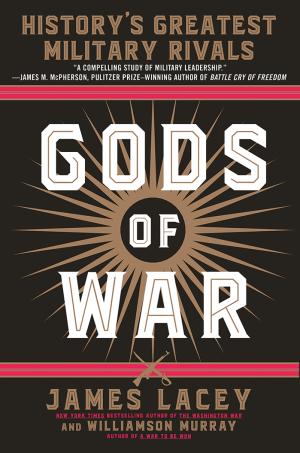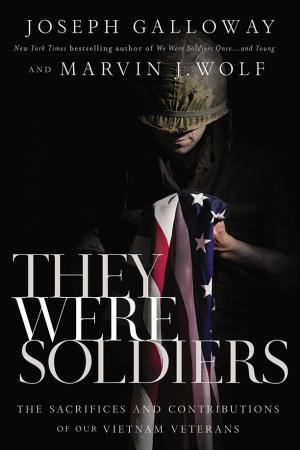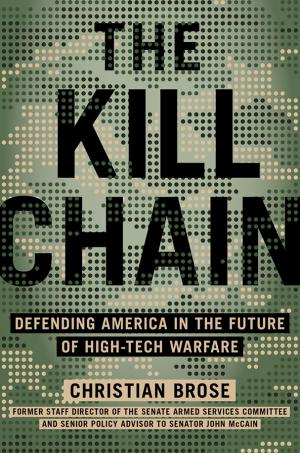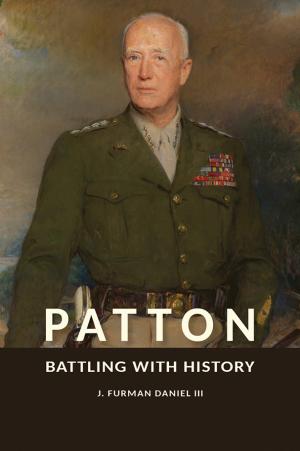November 2020 Book Reviews
November 2020 Book Reviews
When Equal Commanders Clash at Last
Gods of War: History’s Greatest Military Rivals. James Lacey and Williamson Murray. Bantam. 416 pages. $35
By Col. Cole Kingseed, U.S. Army retired
Comparative analysis of history’s great battle captains has always been fruitful ground to be plowed by military historians. In Gods of War: History’s Greatest Military Rivals, authors James Lacey and Williamson Murray not only examine generalship across the sweeping narrative of military history, but they also conclude with a chapter exploring the role of military genius in the modern era.
The result is a superb sequel to their previous work, Moment of Battle: The Twenty Clashes That Changed the World.
Lacey and Murray are eminently qualified to analyze generalship. Both are former military officers; both are accomplished military historians who have taught at the military’s senior service colleges. Lacey is a New York Times best-selling author of The First Clash: The Miraculous Greek Victory at Marathon and Its Impact on Western Civilization and The Washington War: FDR’s Inner Circle and the Politics of Power That Won World War II. Murray is co-author of the highly acclaimed A War to Be Won: Fighting the Second World War and a number of other works.
With respect to methodology, Lacey and Murray take a unique approach in analyzing generalship. Rather than exploring all the most notable great captains, the authors focus only on those military leaders who fought a general of equal caliber (thereby eliminating luminaries such as Alexander). The rivals in Gods of War are Hannibal Barca and Scipio Africanus, Julius Caesar and Pompey the Great, Richard I and Saladin, Napoleon Bonaparte and the Duke of Wellington, Ulysses Grant and Robert Lee, and Erwin Rommel versus George Patton Jr. and Bernard Law Montgomery.
With respect to military genius as exemplified by the battlefield captains in this narrative, inescapable truths emerge. First, tactical brilliance seldom overcomes a flawed strategy. Hannibal, Lee and Rommel were undoubtedly master tacticians, yet all were vanquished by opponents who possessed more coherent strategies.
Scipio, for example, never lost sight of his strategic goal—the defeat of Hannibal’s army and the total subjugation of Carthage in the Second Punic War. Two millennia later, Grant proved successful because he possessed a far better sense of the geographic framework of the larger war than Lee, whose greatest strength lay in battlefield generalship. Obvious admirers of the “Desert Fox,” Lacey and Murray proclaim that Rommel’s performance demonstrates that he was the most outstanding offensive tactician of World War II—but that did not prevent the British and Americans from prevailing in North Africa.
A further certainty is the quest for decisive battle is outdated in the modern era as warfare has become far too complex since the days of antiquity. To support their thesis, Lacey and Murray delve into Napoleonic warfare by contrasting Napoleon’s and the Duke of Wellington’s strategic visions.
Napoleon always sought to conquer his adversaries by replicating Hannibal’s victory at Cannae in 216 B.C. Though he succeeded at Austerlitz in 1805, the emperor never recognized the limits of what was possible, specifically, that France’s resources were not inexhaustible. Wellington, on the other hand, achieved success in Spain and at Waterloo because “his battles were masterpieces of the rapier-like counterstroke, and his strategic plans were of necessity always aligned with his means.”
Lacey and Murray conclude their study by offering a formula for success for current political and military leaders. “Successful strategists,” the authors proclaim, “surround themselves with experts in a variety of fields who manage the day-to-day complexity of evolving situations,” freeing them to make critical decisions that only a senior leader can make.
Our nation is better served in producing many hundreds of “strategic operators” who can comprehend specific pieces of a complex and chaotic environment rather than a singular genius as outlined in these pages.
Col. Cole Kingseed, U.S. Army retired, a former professor of history at the U.S. Military Academy at West Point, New York, is a writer and consultant. He has a doctorate in history from Ohio State University.
* * *
Humble Heroes Leave Impact on Society
They Were Soldiers: The Sacrifices and Contributions of Our Vietnam Veterans. Joseph Galloway and Marvin Wolf. Thomas Nelson. 416 pages. $34.99
By Mike Guardia
After making his impact as co-author of both We Were Soldiers Once … and Young: Ia Drang—The Battle That Changed the War in Vietnam and We Are Soldiers Still: A Journey Back to the Battlefields of Vietnam, war correspondent Joseph Galloway has returned to bookshelves nationwide with his latest achievement: They Were Soldiers: The Sacrifices and Contributions of Our Vietnam Veterans.
Co-authored with Marvin Wolf (another noted author whose works include the co-authored Abandoned in Hell: The Fight for Vietnam’s Firebase Kate), They Were Soldiers is a collection of 48 biographical stories. Each vignette chronicles the individual journeys of Vietnam veterans who have distinguished themselves in the realm of public service, medicine and the arts.
Some of the veterans featured in They Were Soldiers read like a Who’s Who of American society. They run the gamut from high-level leaders like retired Gen. Colin Powell to movie moguls like Oliver Stone to business icons like Frederick Wallace, the founder of FedEx Corp.
This book also features veterans who have worked tirelessly out of the spotlight to serve the public trust. Although their names may not be as recognizable as, say, Stone’s, these humble heroes have nevertheless made an indelible impact on American society.
One such hero is Eileen Moore, a combat nurse who, on the front lines of Vietnam, often found herself trying to comfort mortally wounded men. Among the more heart-rending stories of her time in country, Moore recalls tending to a wounded pilot whose limbs were missing, save one arm. This wounded shell of a man, barely conscious and rendered speechless by the intensity of his wounds, gazed upon Moore with hazy eyes as she read him two letters delivered from his unit.
“One was from his wife,” she says, “with her picture of their little boy. I read it to him, and although he wasn’t speaking, I could tell he understood because tears were running down his face.”
A few hours after hearing his wife’s letter, the wounded pilot passed away. As one of nearly 11,000 American women who served in that conflict, Moore returned to the U.S. and serves as an appellate judge in California. She is also a mentor in the California Combat Veterans Court.
They Were Soldiers is a landmark book for several reasons. It adds to a growing genre in American literature—a song of remembrance for the Vietnam veterans who, despite returning home to a country that castigated them, nevertheless made phenomenal contributions to American society.
This book is also a nod to the scores of other Vietnam veterans who, while not achieving fame or high-profile careers, have nevertheless contributed to American society by raising strong families and being positive influences within their own communities. These veterans, whether draftees or volunteers, served valiantly, and it remains a dark chapter in American history that they were treated so poorly upon their return.
They Were Soldiers is the latest—and most powerful—installment in a positive trend of literature that reshapes the image of our Vietnam veterans. For years after the war, popular films and literature had a tendency to characterize the archetypal Vietnam vet as someone who was malicious, mentally unstable or a misfit in modern society. It seems that only after retired Lt. Gen. Harold Moore and Galloway’s We Were Soldiers Once … and Young, and the subsequent 2002 film, that these trends of negative portrayals were finally broken.
They Were Soldiers is a profound profile of the men and women who, from the throes of America’s most unpopular war, channeled their collective spirit into an enduring legacy of public service, innovation and unparalleled success.
Mike Guardia is a professional author and military historian. He served six years as an armor officer in the Army. He is the author of Hal Moore: A Soldier Once … And Always and co-author of Hal Moore on Leadership: Winning When Outgunned and Outmanned.
* * *
Moving Forward to Ensure U.S. Supremacy
The Kill Chain: Defending America in the Future of High-Tech Warfare. Christian Brose. Hachette Books. 320 pages. $28
By Gen. Robert Brown, U.S. Army retired
America’s military dominance is eroding as we see a return to great-power competition. As China and Russia have studied the U.S. military, they are rapidly developing systems and methods to negate the advantages the U.S. has maintained for nearly three decades.
In The Kill Chain: Defending America in the Future of High-Tech Warfare, author Christian Brose, a former staff director of the Senate Armed Services Committee and senior policy adviser to now-deceased Republican Sen. John McCain, provides a compelling argument that the American military must change or the rapidly growing threat from China will lead to a world where China achieves military dominance.
The book focuses on future warfare and the increased importance of the “kill chain”—understanding what is happening, making a decision about what to do, and taking action. Although this process has been around throughout the history of warfare, it significantly changed during the information revolution. Kill chains that had focused mostly on single platforms could be expanded to a networked web of capabilities that increase efficiency and speed. The problem is that the U.S. military has remained focused on building and buying platforms that are service-centric and can’t effectively network. Meanwhile, China is moving at a rapid pace to develop effective kill chains and negate our previous advantages.
This book does an excellent job of identifying key issues that have prevented change to ensure continued military dominance. Bureaucratic processes and archaic acquisition requirements are blamed, not a lack of effort by dedicated men and women. Brose highlights the incredible change ongoing in great-power competition. Artificial intelligence, quantum computing, hypersonic weapons and developments in the cyber and space domains have created a new type of arms race. In this race, the ability to rapidly identify critical information within volumes of raw data and make quick decisions will provide the advantage in warfare.
Offering solutions to the dilemmas faced by the U.S. military, Brose shows how a Military Internet of Things would provide the type of capabilities needed to significantly enhance the kill chain process. He discusses the human command and machine control involved in these future capabilities and how we must determine the ethical use of these systems in conflict.
The author also adequately covers the key changes to how militaries move, shoot and communicate, and how they must leverage key technological advancements to ensure success. One example is how 3D printing will impact more efficient support of forces across the globe.
What makes The Kill Chain impressive are the efforts to provide answers to the challenges presented instead of just exposing the issues. Brose points out that the U.S. has the key elements that a change of this magnitude requires: plenty of creative and talented people, the means to make it happen, and world-leading technology. One of his best ideas is to ensure strong support of the mavericks who will lead the changes needed to ensure the U.S. remains the world’s preeminent military power.
He also proposes experimentation funds and joint military exercises and training events to test and develop new concepts. There will certainly be bureaucratic challenges ahead, but a focused effort will ensure future success.
Brose’s efforts in this book come at a critical time. I would recommend that those involved in strategy, modernization and the future of conflict read this work and consider Brose’s suggestions. With a properly improved kill chain, we can maintain a dominance that will significantly deter any foe from conflict with the U.S., as they would know that defeat is a certainty.
Gen. Robert Brown, U.S. Army retired, retired in October 2019 after 38 years of service. In his final assignment, he served as commanding general of U.S. Army Pacific, Fort Shafter, Hawaii. Earlier, he served as commanding general of the Combined Arms Center and Fort Leavenworth, Kansas; commanding general of I Corps and Joint Base Lewis-McChord, Washington; and commanding general of the Maneuver Center of Excellence and Fort Benning, Georgia. He is a senior fellow of the Association of the U.S. Army.
* * *
Breaking Down Patton’s Popular Appeal
Patton: Battling with History. J. Furman Daniel III. University of Missouri Press. 320 pages. $40
By J. Ford Huffman
Gen. George Patton Jr. was a man obsessed with—not haunted by—the ghosts of history past, history present and history to come. He studied history, served during the making of it and put himself in the records of it. To him, posterity was a duty, not a distraction.
According to J. Furman Daniel III’s latest book, Patton: Battling with History, Patton could be a “biased source” about himself. Patton crafted his own image for promotional purposes in the Army and in American culture, writes history professor Daniel, who edited a 2016 collection of Patton’s writings, 21st Century Patton: Strategic Insights for the Modern Era. Patton was not always a gentleman but was always a scholar.
Living with the legacy of his grandfather, a Confederate colonel, and family friend John Singleton Mosby, a Confederate cavalry officer, Patton aspired to be a soldier from a young age. He devoted himself to learning how to be, in his mind, “the”—not “an”—exemplary one. Later, as a World War I veteran, even the threat of a second world war was tantalizing, “an opportunity to finally win the fame he craved and prove his theories on modern warfare.”
“The popular myth is that Patton was a natural warrior, not a serious scholar,” according to Daniel. Daniel refutes the myth, which Patton himself promoted, some biographers perpetuated, and the 1970 movie Patton popularized. Daniel admonishes “modern historians who repeat these unsubstantiated legends as established facts.”
He castigates Patton, too, albeit respectfully. A minor but astute example is Patton’s description of visiting the Roman ruins in a city his Third Army liberated in World War II. “Visited Trier … so did Caesar,” Patton notes.
However, Daniel points out that Caesar’s visit predated the town’s existence. “It is improbable that Caesar or his legions ever marched down any of the roads,” Daniel writes. Patton’s imagination “appears to have admittedly gotten the better of him.”
Professionally, Patton also adjusted the facts with a pen that was as mighty as his famous sword, the Model 1913 Cavalry Saber, which was developed after scholar Patton proposed the design in Cavalry Journal. He wanted his memoirs, published posthumously as War As I Knew It, to have the last words, each self-serving.
The “most prominent example [is Patton’s published treatment] of the ill-fated Task Force Baum,” Daniel writes. Patton “places blame on everybody [but himself] and purposely distorts the record” of ordering a raid to rescue American prisoners that just happened to include his daughter’s husband.
The “warped application of history” grew along with contentious public actions and statements, from slapping hospitalized soldiers to showing laxity toward former Nazis in post-war Germany. Friend and boss Gen. Dwight Eisenhower was frustrated: “He misses more good opportunities to keep his mouth shut than almost anyone I ever knew.”
Patton: Battling with History is an opportune outlet for Daniel’s focus on the student and the soldier, and Daniel shows how each vocation required the general’s diligence. The book is written for academic shelves yet has inherent popular appeal.
Despite Patton’s flaws, his “early military study, writings and applications are extremely impressive. They reveal a man who possessed a first-rate mind for history and strategic thought,” Daniel writes. In essence, the book presents Patton’s foibles but praises his fortitude, which Daniel believes is worth emulating: “Modern warriors should be taught that a personal and relevant approach to the past is an indispensable skill for the military profession.”
J. Ford Huffman has reviewed nearly 400 books for ARMY magazine and other publications, including the Chicago Tribune, San Francisco Chronicle and Military Times. He serves on the Student Veterans of America’s Board of Directors and the Armed Services Arts Partnership’s Artist Council.





